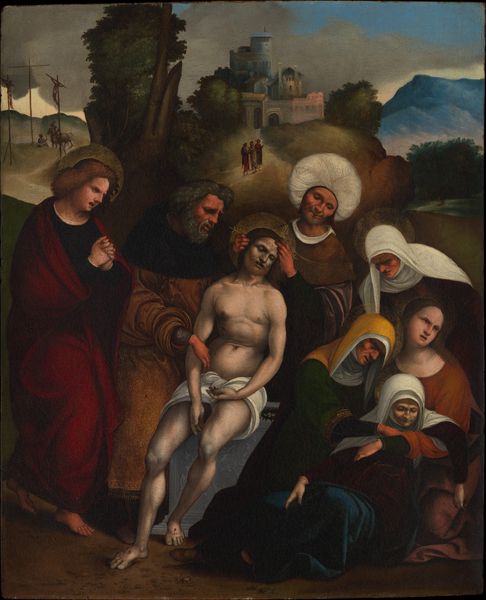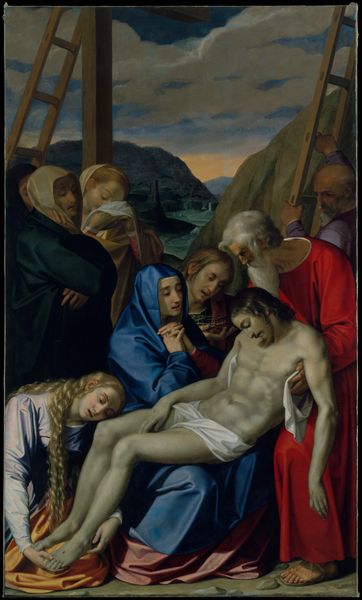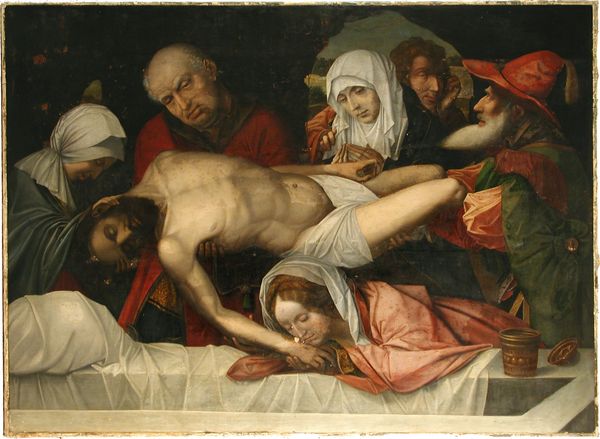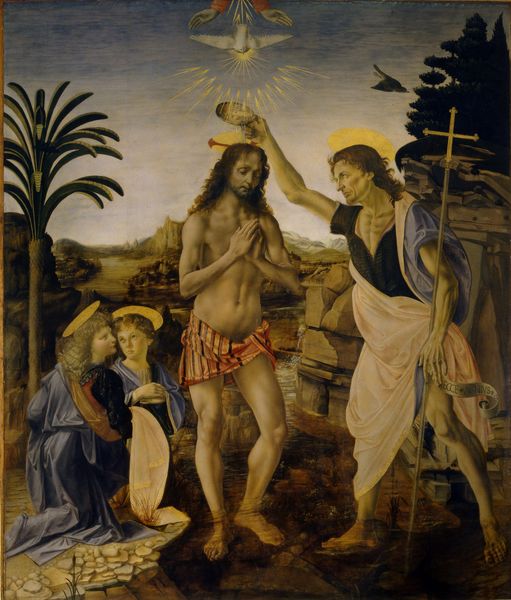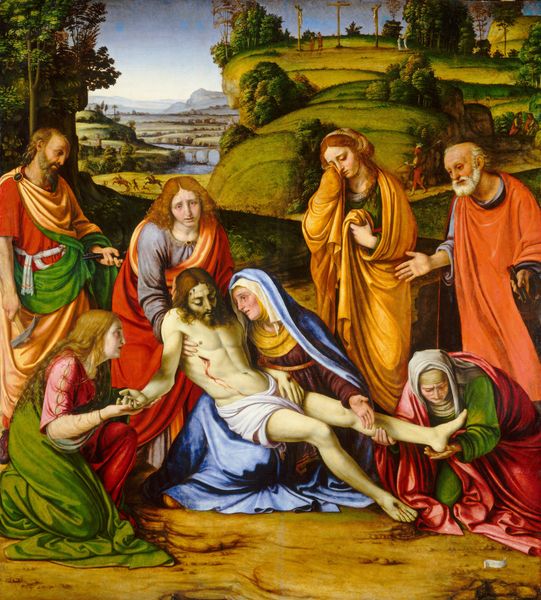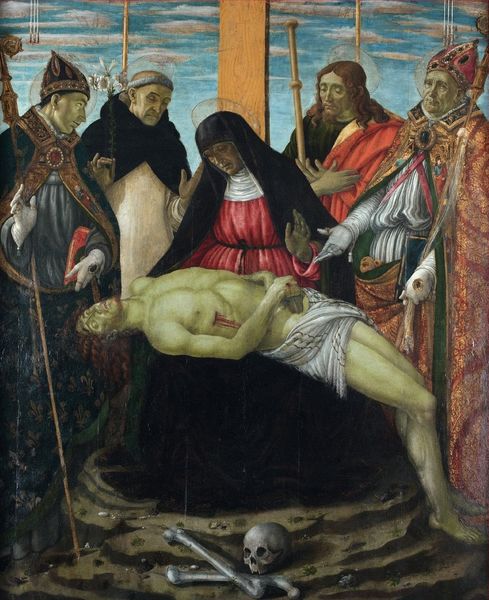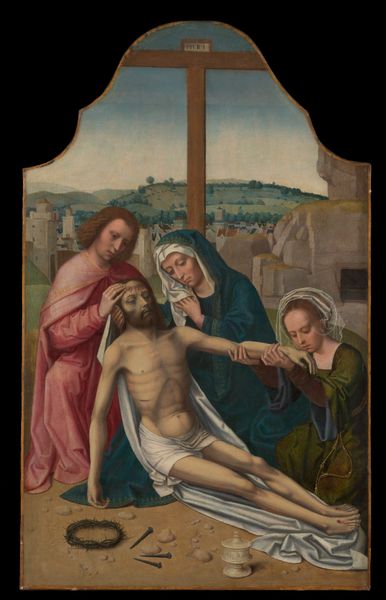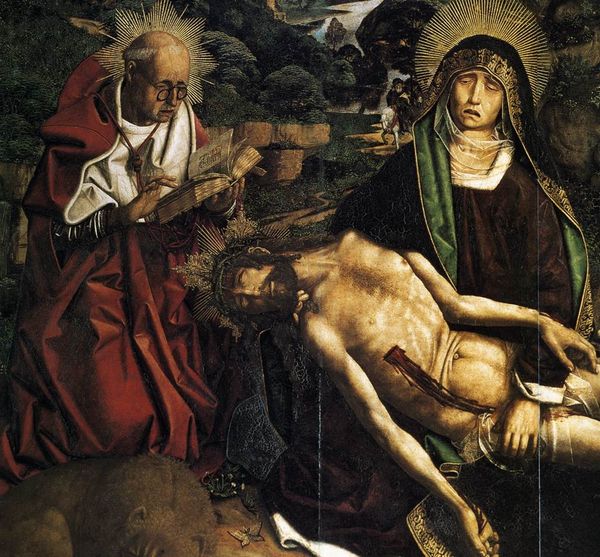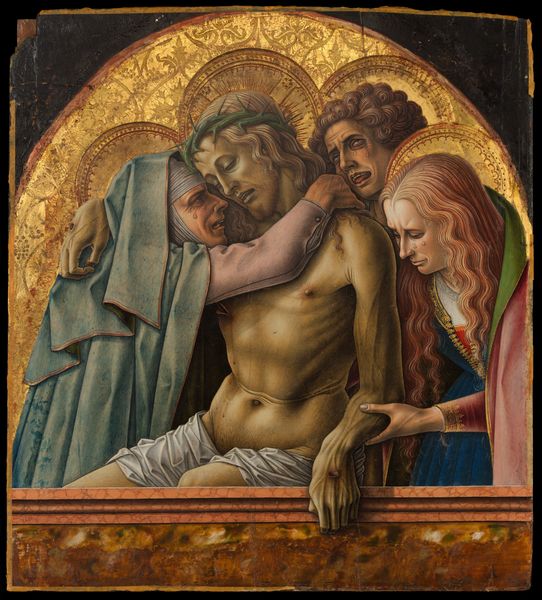
panel, tempera, painting, oil-paint
#
portrait
#
woman
#
panel
#
tempera
#
painting
#
oil-paint
#
landscape
#
figuration
#
11_renaissance
#
oil painting
#
jesus-christ
#
group-portraits
#
history-painting
#
italian-renaissance
#
portrait art
Dimensions: 113.5 x 84.2 cm
Copyright: Public Domain
Curator: This is Joos van Cleve’s “Lamentation of Christ,” painted around 1524, using oil and tempera on panel. I’m immediately struck by its poignant depiction of grief and the somber palette used to convey such deep sorrow. Editor: Yes, it’s very moving. The composition is so carefully arranged. What strikes me most is the almost theatrical presentation of Christ’s body, and the individualized responses of those around him. How do you interpret this work? Curator: Well, beyond the obvious religious narrative, I see a commentary on power, suffering, and societal structures. The Lamentation wasn't merely a religious scene; it was a powerful expression of communal grief during a time of immense social upheaval. Who is given the agency to mourn, and whose grief is considered valuable? How does gender shape the expression of sorrow here? Look at Mary Magdalene, actively kissing Christ's hand, versus the more restrained grief of the male figures. What does that say about societal expectations? Editor: That’s a fascinating perspective. I hadn’t considered the different expressions of grief as potentially gendered. I was so focused on the overall religious aspect, I missed those nuances. Curator: Precisely! Art, even seemingly traditional religious art, often holds up a mirror to the society that produced it. We need to look critically at what stories are being told, whose voices are amplified, and whose are silenced. Van Cleve uses this biblical scene to tap into the shared anxieties and vulnerabilities of his contemporary audience. Editor: It makes me think about how contemporary artists use similar strategies to address current social issues. Seeing the painting this way opens up so many new avenues of inquiry! Curator: Indeed. The work resonates beyond its immediate subject. And, hopefully, we can consider ways that social issues related to race and class can shape artistic and interpretive efforts. Editor: Absolutely. It’s been enlightening to delve into the intersectionality present even in a historical piece like this. Thanks!
Comments
Join the conversation
Join millions of artists and users on Artera today and experience the ultimate creative platform.

